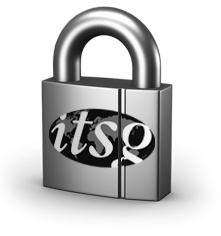Corporate Tax Guide: Hong Kong

Members:
- Thomas Lee (TLP GROUP)
- P.Y. Ng (TLP GROUP)
- Elaine Pui (TLP GROUP)
- Belinda Yu (TLP GROUP)
|
1. Country
The information is valid for the entire country except where indicated. For example, in the case of Malaysia, Labuan is part of Malaysia but has a special tax regime, so this is noted. |
Hong Kong – entire region. | |||||||||||||||
|
The corporate tax rate shown is the typical corporate tax rate that a domestic corporation owned by non-resident persons would pay. The tax rate does not include withholding tax on dividends, but does include a distribution tax shown separately if applicable. Certain countries have a low corporate tax rate, but charge an additional tax when a dividend is distributed. Because this tax is paid by the corporation, and not deducted from the amount of the dividend itself, it is not a dividend withholding tax. As a result, it typically cannot be reduced by an international tax treaty. |
Profits tax is charged at 16.5% for corporations or 15% for unincorporated businesses Two-tiered profits tax rates, effective from year of assessment 2018/19:
| |||||||||||||||
|
The basis of taxation for a corporation will typically be one of:
|
Territorial. | |||||||||||||||
|
Where non-resident corporation carries on business in a country, business profits may be subject to corporate tax. In addition, a branch profits tax may apply in lieu of dividend withholding tax. This branch profits tax applies to the after tax profits, typically at a fixed percentage. An international tax treaty may reduce the rate of branch profits tax, typically to the rate provided for dividend withholding. |
There is no branch profits tax. A branch office of a non-resident corporation in Hong Kong is subject to the same profits tax treatment as a Hong Kong corporation. | |||||||||||||||
|
The common forms of business entity are noted. In addition, the entities which are flow through entities for U.S. tax purposes are indicated. |
| |||||||||||||||
|
Capital gains may be fully taxed, partially taxed or not at all. In certain countries, an exemption, called the participation exemption, will apply to exempt from tax a capital gain from disposition of a substantial holding of shares of a subsidiary. Where a participation exemption is applicable, it is noted together with a summary of the main conditions. |
Not taxable. | |||||||||||||||
|
Certain countries allow group taxation, otherwise known as consolidated tax filing. Here the tax returns of a group of corporations in the country may be combined together, which can be useful. If group taxation is permitted, it is noted along with the main conditions. |
Not permitted. | |||||||||||||||
|
Countries offer various kinds of special exemptions and incentives. Examples are a reduced tax rate, a tax holiday, a tax credit on the purchase of equipment, special accelerated deductions for deprecation, incentives for R&D, and various others. Here the major items are noted. |
Major exemptions and incentives include: Exemption from profits tax / payment of profits tax
Proposed tax concession pending legislation Enhanced tax deduction for research and development (R&D) expenditure
| |||||||||||||||
|
Many countries have thin capitalization rules which limit or deny the deduction of interest expense in certain circumstances. For example, if debt exceeds three times equity, a proportionate amount of interest expense may not be deductible. Limitations take various forms, restricting the interest expense deduction to a percentage of profit, deeming the debt to be equity and the interest to be a payment of dividends, and various other rules which may blend of these principles. Where a country has thin capitalization rules, they are briefly described. |
There is no thin capitalization rule. | |||||||||||||||
|
Many countries have transfer pricing rules. They very often follow the OECD guidelines and the arms length principle. Some countries have specific rules which apply in certain cases. In addition, some countries allow for a selection of the most appropriate transfer pricing methodology in the circumstances, while other countries follow a hierarchy of methods, with the CUP method (comparable uncontrolled price) often ranking first. The transfer pricing rules are briefly explained. |
The tax law on transfer pricing ("TP") regulatory regime was enacted in July 2018. The TP regulatory regime principally follows the OECD requirements. TP Rules
TP documentation requirements If the entity enters into transactions with the associated entities, it is required to prepare and file with the IRD Master File and Local File within 9 months after the end of the accounting period. Thresholds for exemption:
A Country-by-Country report ("CbC report") must be filed in respect of a Group if its annual consolidated group revenue reaches HK$6.8 billion. The CbC report should be submitted to the IRD within 12 months after the end of the accounting period. | |||||||||||||||
|
11. CFC Rules
Many countries tax passive income earned in controlled foreign corporations (CFC’s) on an imputation basis while active income is not taxed. Such CFC rules are usually complex and vary significantly in what is considered passive income, and how foreign tax paid is taken into account. Some countries approach CFC rules on the basis of whether or not the foreign corporation is resident in a low tax jurisdiction or a tax haven. This may be done through a black list of countries. The general overview of CFC rules is described in simple terms. |
There is no CFC rule. | |||||||||||||||
|
Profits repatriated by way of dividends from a subsidiary to a parent company are typically taxed in one of three ways:
|
Profits after tax repatriated by way of dividends from a subsidiary to a parent company are exempted. | |||||||||||||||
|
Most countries allow a foreign tax credit based on a formula, typically net foreign income over the net income times taxes payable. This limits the foreign tax credit to roughly the domestic tax otherwise applicable to the foreign income. There are numerous variations and technical rules in the details of foreign tax credit calculations. Where a foreign tax credit is allowed, the general principles are described. |
Tax payable in respect of any income in a foreign country is allowed as a credit against tax payable in respect of that income in Hong Kong if there is a double tax arrangement entered into between Hong Kong and that country and the taxpayer is a Hong Kong resident for the year of assessment in respect of which the foreign tax credit is claimed. In general, the amount of tax credit is restricted to the amount of tax payable in respect of the same income calculated in accordance with the IRO. Moreover, foreign tax charged on the gross amount of the earnings (e.g., withholding tax on interest and royalty income) is deductible if the earnings are chargeable to tax in Hong Kong. | |||||||||||||||
|
14. Losses
Losses typically can be carried forwards for a period of years, and sometimes can be carried back. Losses may be segregated into capital losses and non capital losses. |
There is no time limit for tax-adjusted loss carryforward. Capital losses and loss carryback are not allowed. | |||||||||||||||
|
It is not practical to list all of the tax treaties which a country has in a simple guide like this. Accordingly, a link is provided in each case to the tax treaties. Some countries have entered into Tax Information Exchange Agreements (TIEA). Treaties are more and more containing provisions that limit benefits (LOB provisions). |
The IRD webpage has links to all tax treaties entered into with Hong Kong: Comprehensive Double Taxation Agreements: www.ird.gov.hk/eng/tax/dta_inc.htm Limited Double Taxation Agreements: www.ird.gov.hk/eng/tax/dta_ldta.htm Tax Information Exchange Agreements: www.ird.gov.hk/eng/tax/dta_tiea_agreement.htm | |||||||||||||||
|
Withholding tax rates vary considerably from treaty to treaty, and countries may have domestic exemptions applicable in certain circumstances (for example copyright royalties, interest paid to arm’s length persons, etc.). A table shows the typical rates but cannot adequately summarize all of the details. The applicable treaty should be consulted. |
Hong Kong does not levy withholding tax on interest or dividends paid to a non-resident. However, royalties received by or accrued to non-residents are deemed to be assessable profits at 30%. The Hong Kong payer is responsible for reporting and withholding the tax. In a case where the recipient is an associate, unless the Commissioner of Inland Revenue is satisfied that no person carrying on a trade, profession or business in Hong Kong has at any time wholly or partly owned the property in respect of which the sum is paid, the percentage of royalties deemed to be assessable will be 100%. The effective profits tax rates for corporations / unincorporated businesses on royalties are respectively,
| |||||||||||||||
|
17. Taxation Year
Some countries allow for the selection of year-end while other countries specify a particular year-end which all business entities must have. Normally the taxation year cannot exceed 12 months. Where it can exceed 12 months, this is noted. |
From 1 April of each year to 31 March of the following year. Taxpayers liable to profits tax, corporate and unincorporated, may adopt their own accounting year-end dates. | |||||||||||||||
|
This is the due date for filing a tax return. Where extensions are available, this is noted. |
| |||||||||||||||
|
19. Tax Instalments
The typical tax instalment requirements are noted. |
Application for payment of tax by instalments must be submitted with the following supporting documents:
| |||||||||||||||
|
20. Payment of Tax
This is the date when the corporate tax owing for the year must be paid. It may be different from the tax return filing due date. |
Tax is normally payable in two instalments. The respective due dates for payment of the first and the second instalments will normally be at least six weeks from the date of issue of the notice of assessment and the due date of the first instalment. In the notice of assessment for a year of assessment, apart from the final tax assessed for the current year, payment of provisional tax for the following year estimated based on the profits for the current year will also be demanded. The amount of the first instalment will normally include the full amount of final tax for the current year plus 75% of the provisional tax for the following year, and the amount of the second instalment will normally be the remaining 25% of the provisional tax for the following year. | |||||||||||||||
|
This is the period after which the tax department cannot in normal circumstances reassess a taxation year. It is sometimes referenced to the end of the taxation year and sometimes to the date of the first assessment of that taxation year. |
The statute of limitation is six years after the expiration of the year of assessment in which the profits are subject to reassessment. The statute of limitations will be extended toten years for cases of fraud or wilful evasion. | |||||||||||||||
|
If a country has exchange controls, this is noted, together with the main requirements. |
There is no exchange control. | |||||||||||||||
|
23. VAT
A VAT tax system typically provides that the supply of goods and services is classified as taxable, tax exempt, or zero rated. Where a business is engaged in an activity which is taxable, it must charge VAT on its revenue, and can claim a refund of VAT on its expenditures. Where the activity is exempt, it does not charge VAT on its revenue, and cannot claim back VAT paid. Where the entity is engaged in activities which are zero rated (typically agriculture, food services and exports), then it can claim back VAT which it has paid on its expenditures, and does not charge VAT on its revenue. If a country has a typical VAT system, this is noted. If a country has no VAT system but a sales tax system, this is indicated. Some countries may have a mixture, and taxes may apply at different levels (federal and state for example). |
There is no VAT. | |||||||||||||||
|
Stamp duty, or land transfer tax, can apply on such things as the transfer of shares, land, or the issuance of bonds or debentures. This is described together with the applicable rates. |
Stamp duty is chargeable on the following documents:
Buyer's Stamp Duty (BSD), unless specifically exempted, is payable on an agreement for sale or a conveyance on sale executed for the acquisition of any residential property. BSD is charged at 15% on the consideration or the market value of the property (whichever is higher) The rates of stamp duty and SSD can be found at the following link: www.gov.hk/en/residents/taxes/stamp/stamp_duty_rates.htm | |||||||||||||||
|
25. Capital Tax
If capital tax is payable, this is described. Capital tax may apply in specialized industries, such as banking and insurance, even if a country does not generally apply a capital tax to corporations. |
There is no capital tax. | |||||||||||||||
|
26. Other Taxes
Where significant, other taxes are noted. |
Employers and employees are each liable to contribute to the Mandatory Provident Fund at 5% of the employee’s salary every month, subject to a cap of HK$1,500 per month or HK$18,000 per year. | |||||||||||||||
|
Anti-Avoidance Rules take many forms, the most common ones are a general anti-avoidance rule, treaty shopping limitations, the requirement for economic substance (or a business purpose in carrying out transaction) and specific anti-avoidance rules for particular purposes. A very brief overview of the anti-avoidance rules is described. |
The general anti-avoidance rules mainly aim at tackling transactions that are artificial or fictitious; or transactions that are entered into for the sole or dominant purpose of enabling a person to obtain tax benefit; or transactions with closely connected non-residents not carrying out business on an arm’s length basis. The rules allow the IRD to disregard any such transactions in making a tax assessment; make a tax assessment to counteract the tax benefit; refuse to set off losses brought forward; or assess profits chargeable to a closely connected non-resident in the name of its Hong Kong connected person as if the Hong Kong connected person was the agent of the non-resident. | |||||||||||||||
|
Where a non-resident person holds shares of a corporation established in the country listed, the capital gain which results may be taxable or not taxable depending on the circumstances and, possibly, the existences of an international tax treaty. The general rules are noted. |
The gain on sale of shares in a Hong Kong corporation is generally not taxable unless the buying and selling of shares of the corporation were in the nature of a trade. | |||||||||||||||
|
Where a corporation is acquired through the purchase of shares, sometimes a step up is allowed so that the cost of its assets can be revalued. The main rules are briefly summarized. |
Step up on acquisition is not available. | |||||||||||||||
|
30. Use of Rulings
In some countries, rulings are commonly used (and sometimes even required). In other countries the system is either unavailable or not commonly used except in special circumstances. |
Advance ruling is available. | |||||||||||||||
|
31. Other
Other important aspects of the tax system are noted. |
N/A | |||||||||||||||

 Login
Login
















































